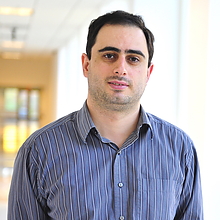 Mohammad T. Hajiaghayi, the Jack and Rita G. Minker Professor of Computer Science at the University of Maryland, is among a select group of 31 finalists vying for top honors in the Blavatnik National Awards for Young Scientists competition.
Mohammad T. Hajiaghayi, the Jack and Rita G. Minker Professor of Computer Science at the University of Maryland, is among a select group of 31 finalists vying for top honors in the Blavatnik National Awards for Young Scientists competition.
The annual event—founded by the Blavatnik Family Foundation in 2007 and independently administered by the New York Academy of Sciences—brings together rising stars in science from across the United States to compete for awards in three categories: Chemistry, Physical Sciences & Engineering, and Life Sciences.
Winners in each category will receive $250,000—the world’s largest unrestricted prize for early-career scientists.
“The world has never needed scientists more than right now,” says Len Blavatnik, founder and chairman of Access Industries and head of the Blavatnik Family Foundation. “Their research will lead to solutions—new inventions, discoveries, and ideas—that will endow society with the tools needed to surmount the difficult challenges our world currently is faced with. We are very proud to honor them.”
The Blavatnik competition recognizes past accomplishments and future ability for faculty at America’s top academic and research who are age 42 or younger. This year, there were 305 nominations from 161 academic and research centers across 41 states.
The three 2020 National Laureates, chosen from the 31 finalists, will be announced on July 22, 2020.
Hajiaghayi, who has an appointment in the University of Maryland Institute for Advanced Computer Studies, is one of only two computer scientists in the Physical Sciences & Engineering category.
He will bring his expertise in modeling complex networks to the competition, building on his vast experience in developing efficient algorithms that are useful in smartphone and cloud computing applications.
In addition, Hajiaghayi’s broad research portfolio includes algorithmic game theory, where he has solved difficult problems such as computing the optimal solution to the “Blotto game”—a zero-sum game in which two players compete to allocate limited resources, and which has applications in sports, advertising, and politics.